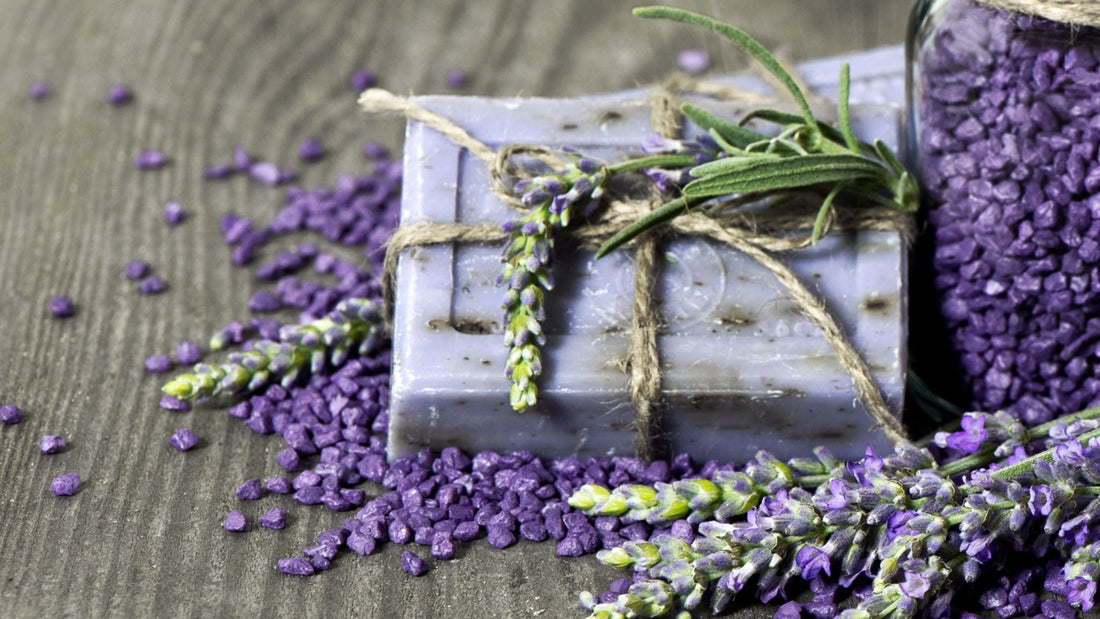Lavender soap has remained as popular as ever over the years and for good reason. Not only does it smell amazing but it’s calming for body and mind and soothing for skin. Try our lavender soap recipe and store up that summer feeling.
Ingredients:
This lavender soap recipe will make around 1200g of soap
- 450g | 490ml olive oil
- 135g cocoa butter
- 315g coconut oil
- 250g water
- 130g sodium hydroxide
- 27g | 30ml lavender essential oil
- 20g Ultramarine violet pigment
- Optional - dried lavender buds for decoration
Equipment:
- Gloves
- Goggles
- Weighing scales
- Hand blender
- A 1200g silicone loaf mould or a cardboard box lined with greaseproof paper
- 2 x 1 litre plastic or stainless steel jugs
- 1 x 3 litre plastic jug
- Silicone or stainless steel spatula
- Digital or jam thermometer
Safety Note: When working with sodium hydroxide you must wear gloves and goggles at all times. It is a caustic product and will burn. In the event of getting it on your skin, rinse well with plenty of plain water. If it is splashed in the eyes, wash with water and seek urgent medical attention. Keep away from pets and children at all times.
Method:
1. Weigh and mix your water and sodium hydroxide

- Weigh your cold water into one of your jugs and place to one side
- Pop your safety gear on - goggles and gloves
- Weigh the sodium hydroxide out
- Pour the sodium hydroxide into your water jug, not the other way around. Take care to do this in a ventilated area. Stir for around 10 to 15 seconds until completely dissolved with your silicone/stainless steel spatula. Place safely to one side. It will be too hot to use at the moment.
2. Weigh and heat your oils
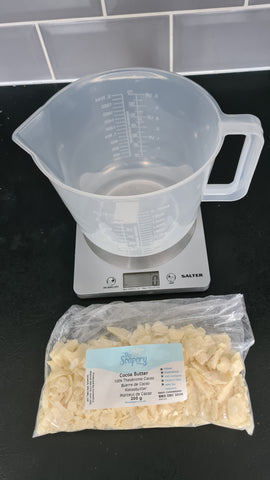
- Weigh out your olive oil into the 3 litre jug
- Weigh your coconut oil and cocoa butter into your remaining 1 litre jug
- Melt your coconut oil and cocoa butter in the microwave (or on the stove top in a saucepan) and add your olive oil.
3. Measure and mix your essential oils and colourants.
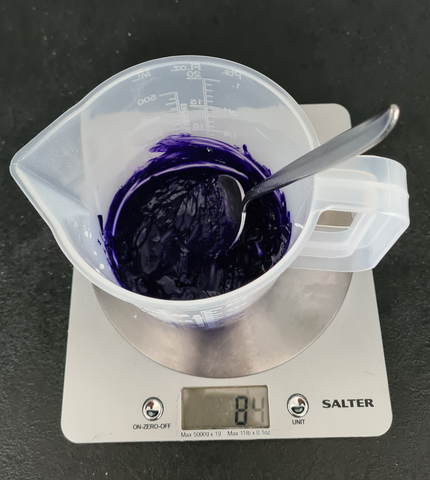
- Weigh out your lavender essential oil
- Weigh out your mica powder and mix in with your essential oils
4. Check and test your temperatures
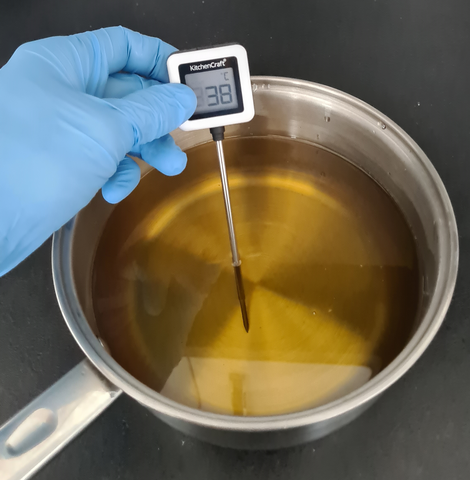
- Test the temperature of your sodium hydroxide solution with your thermometer. You want it to cool down to around 40°C. Do not reheat it if it is below 40°C, just warm your oils a little more to compensate.
- Test the temperature of your combined oils. They need to be around 40°C too
- If they need to be warmed a little then pop them back in the microwave
- Pour your essential oils/mica solution into your oils and blend.
- Pour your sodium hydroxide solution into your oils.
5. Blend until trace

- Stir gently with your hand blender and then blend until it reaches a light to medium trace. This means you have a mixture that has thickened up a little and when you drizzle a little of it across the top of the jug of mixture it sits on top for a moment. You are looking for a pourable batter but not a thick blancmange like texture.
6. Pour into your moulds
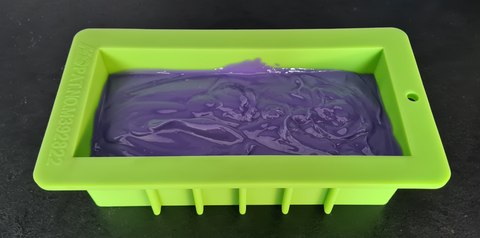
- Pour into your mould (View our range of soap moulds here). Scatter lavender buds on top if required (we don’t recommend mixing them into your soap as they will go brown and do not look very attractive)
- If the weather is a little cool then place the mould in a cardboard box and wrap it in a towel to keep it warm and therefore aid the saponification process
7. Cut and cure your soap

- Leave for 2 days before unmoulding and cutting into bars with a non-serrated knife. If you scattered lavender buds on top, turn your soap on its side before cutting so that the knife does not drag the buds through the soap. Wear gloves for handling the soap at this stage.
- Place somewhere with a good airflow between bars. You can put them back in the cardboard box just try and ensure they are not touching.
- Curing - your soap will be ready to use within 4 to 6 weeks
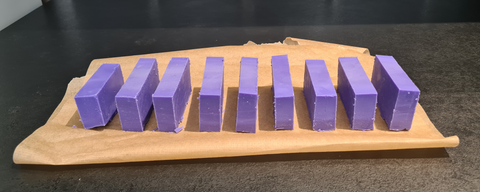
How did your bars turn out? Let us know over on our Facebook or Instagram pages.
